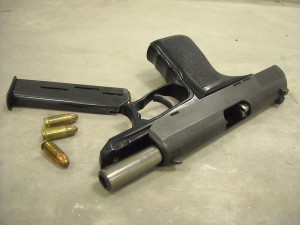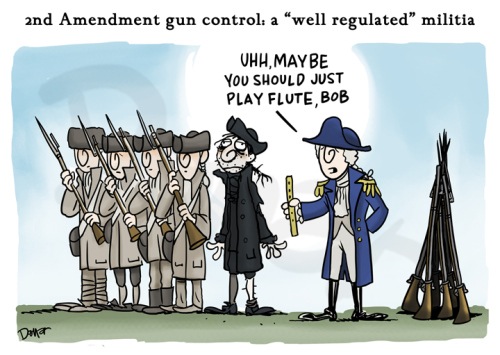Gun control reform is again in the spotlight after 19 people, including two children, were shot in New Orleans on Sunday when gunmen opened fire at a Mother’s Day parade.
Police suspect that two, maybe three, shooters were involved.
The gun slinging mentality that has dominated American culture for centuries is now under intense scrutiny, with 90 per cent of the country in favour of strict legislative reform.
From the Mother’s Day shootings to the Newtown Sandy Hook Elementary killing of 20 children and six staff, the bombing at the Boston Marathon and the massacre at an Aurora theatre last August, violent tragedy has wracked the United States from coast to coast.
Citizens are now blistering for action.
The question is how do we go about preventing homicide? For millions of Americans, limiting gun rights is the answer. Unfortunately, Congress is not showing support, as the Senate proved again last month when it road-blocked moderate strides toward tighter control.
General Manager of Australia’s Firearm & Safety Training Council, Gary Bryant, sees America’s disintegrative lack of progress as a failure in communication.
“The stances taken by the pro and anti-gun lobbies are so divergent because there is an inherent climate of mistrust between both sides,” Bryant said.
The issue boils down to a fear that picking apart the “inalienable rights” of the US Constitution means the whole legislative tapestry may come undone.
“The pro-gun side is reluctant to give any ground because they see it as a foot in the door problem,” Bryant said.
Gun enthusiasts are unwilling to accept that it’s possible to prevent unstable characters from getting hold of firearms while still allowing law-abiding citizens to practice safe ownership.
As a former army officer, Bryant said the NRA’s claim that people need guns to defend themselves has no merit and reflects poorly on the US Government.
“Needing firearms for self-protection is an indication of a failing or failed state,” Bryant said.

HK P9S in 9 mm Parabellum. The P9S was adopted by the US Navy, German police and other military and law enforcement. Photo: Ridzuan Aziz
This is a very polarising issue for Americans. Canadians, with 30-50 firearms per 100 people, closely shadows the US in gun ownership but according to data from Canada’s Uniform Crime Reporting and Homicide Surveys, only 2.4 per cent of all Canadian homicide victims fall prey to firearm attack, compared to a staggering 68 per cent in the US.
Catherine Brantz, a survivor of the 1999 Columbine tragedy, doesn’t see guns as a necessity but respects the right to safeguarded ownership.
“I approach guns as what they are – tools,” she said. “There are almost as many guns here as in Alaska and those of us who don’t shoot the masses respect and embrace them,” she said.
Since her involvement in the massacre where she witnessed firsthand the carnage guns can produce, Brantz has had the opportunity to reconsider the role guns play in American society.
“I think tragedies like these reflect more on our moral decline rather than a tool,” she said.
“After Columbine I was inspired to complete the Law Enforcement Academy and become POST certified to be a cop in this state. Now guns are part of the job and I loved every bit of training I received.”
Looking at Australia’s own history of gun violence, it is easy to draw many parallels. In 1996, just three years before the horrific attack on Columbine High School, 28-year-old Martin Bryant murdered 35 people with a semi-automatic assault rifle in a Port Arthur cafe.
In response to one of the deadliest one-man perpetrated mass homicides in world history, the Australian Government took swift legislative action. In the months following the terrible event, laws were passed that significantly restricted firearm access and ultimately destroyed nearly one fifth of Australia’s entire stock of firearms.
The legislation did not revoke gun ownership rights altogether and yet was a colossal success. With firearm homicides dropping 59 per cent between 1995 and 2006, Australia has effectively proved that strong gun control legislation can be a life-saving solution.


